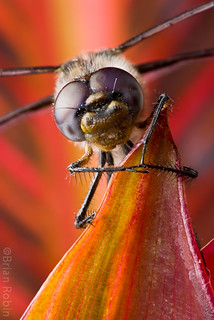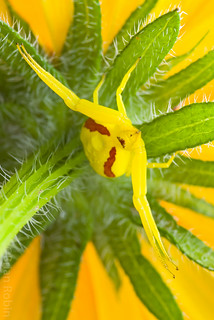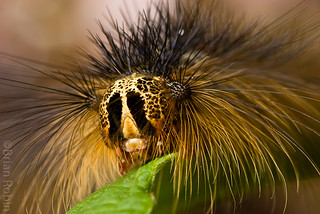 Originally posted by audiobomber
Originally posted by audiobomber 
I wouldn't use a gunstock on a camera in the US. You might be shot by the police. (

I don't understand how to use a tripod for 1:1 macro. Do you also have a macro rail? You must be shooting very patient or lethargic insects.
1:1 is really tough in the field. I suspect, without measurements, that most of my field insect macros are 1:5 (large butterflies) to the vicinity of 1:2 ( small flies - then cropped PP to fill the frame*). However, I have a slider made by Cullmann (lock knob closed by spring tension - twist back against the tension to slide, then let go and the spring twists the knob to lock - extremely securely) that allows about 6 inches of motion. Using a unit-focus macro lens (favorite = SMCA ED 200mm) six inches is all the distance adjustment necessary to go from around 1:2.5 to 1:1 without moving the tripod. Alternatively, more rarely, I use a geared Pentax macro focusing device, but it is a flawed design and does not have the range of movement of the Cullmann slider.
*DOF is a major problem at higher macro ratios. Backing off, then cropping PP gets more DOF on the insect, as it should based on optical principles. The loss of IQ is usually more than compensated by the increased DOF, that is, the impression that the image shows a lot of detail is enhanced even though if you pixel-peek a cropped image taken @ 1:3 versus a frame-filler @ 1:1, the latter will have more detail in the zone of perfect focus. Critical is having a macro lens with excellent IQ, and I've collected several.
AND V-A-V using a gunstock. As noted, over 50+ years I've experimented with just about every macro method there is. The gunstock was one of those experiments, but I found it generally clumsy to use compared to a tripod. Too often hand holding I've shifted slightly and either lost the plane or focus or fouled the framing. My % keepers has always been best uding BOTH a tripod and a flash, but there are, as always, exceptions.


 Similar Threads
Similar Threads 
 I'm missing something and need you're advice, help and pointers in how to...
I'm missing something and need you're advice, help and pointers in how to...










 and I am not a static shooter, I tiger around a lot few weeks ago someone came up to me to see if I was all right lying on the ground in the woods for a caterpillar
and I am not a static shooter, I tiger around a lot few weeks ago someone came up to me to see if I was all right lying on the ground in the woods for a caterpillar 












